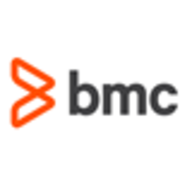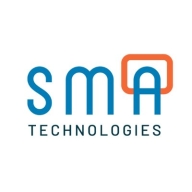


We performed a comparison between Control-M and OpCon based on our users’ reviews in five categories. After reading all of the collected data, you can find our conclusion below.
Features: Control-M offers a range of valuable features such as Managed File Transfer, credentials vault, integration capabilities, Role-Based Administration, file transfer integration, collaboration dashboard, scheduling, configuration ease, reporting, workload archiving, and forecasting. OpCon shines in its flexibility, integration capabilities, self-service, automation of manual tasks, GUI, database functionality, deployment concept, testing environment, self-service solution manager, on-demand access, file watcher, MAS feature, reliability, process linking, and automation capabilities.
Control-M can be improved by enhancing its microservices and API integration, addressing bugs in the web interface, developing a lighter web version, improving reporting capabilities, streamlining the upgrade process, and integrating with third-party tools. OpCon needs improvement in the functionality of its web-based interface, upgrading process, documentation, and accessibility through a mobile app.
Service and Support: Control-M's customer service has a range of opinions, with some customers appreciating the quick and knowledgeable support team, while others feel that the support could be more proactive and faster. OpCon's customer service and support have been consistently praised, with customers commending the technical support team for their timely responses and effective solutions.
Ease of Deployment: The setup process for Control-M is typically considered simple and user-friendly, aided by informative guides and videos. Nevertheless, a few users noted that manually converting jobs and scripts introduced complications and delays. OpCon's initial setup may be intricate, but with the support of SMA consultants, the procedure becomes more seamless.
Pricing: Control-M is seen as costly, particularly for smaller businesses, whereas OpCon is acknowledged as a pricier but high-quality option. Control-M's pricing is dependent on the number of jobs or endpoints, while OpCon offers tiered pricing based on usage.
ROI: Control-M is a valuable solution that enhances efficiency, minimizes maintenance windows, and offers cost-efficiencies. OpCon saves time, decreases errors, improves productivity, and provides cost benefits.
Comparison Results: Control-M is the preferred choice when comparing it to OpCon. Users find the initial setup of Control-M to be straightforward and easy, with a clear understanding of the architecture and installation process. Control-M's Managed File Transfer feature is highly praised, as it eliminates the need for manual file transfers and offers a unified view for monitoring and orchestrating workflows and data pipelines.
| Product | Market Share (%) |
|---|---|
| Control-M | 15.1% |
| JAMS | 2.6% |
| OpCon | 1.8% |
| Other | 80.5% |


| Company Size | Count |
|---|---|
| Small Business | 11 |
| Midsize Enterprise | 8 |
| Large Enterprise | 18 |
| Company Size | Count |
|---|---|
| Small Business | 30 |
| Midsize Enterprise | 15 |
| Large Enterprise | 122 |
| Company Size | Count |
|---|---|
| Small Business | 16 |
| Midsize Enterprise | 29 |
| Large Enterprise | 19 |
JAMS is an automation and job scheduling solution designed for workflow optimization, catering to businesses large and small with flexible licensing and integration options.
Offering both Core and Advanced packages, JAMS supports a range of environments from small teams to large-scale operations. Its standout features include integration with platforms like PowerShell, SQL, and SAP, coupled with capabilities such as dependency management and natural language scheduling. JAMS simplifies job management, centralizes workflows, and boosts productivity with its robust automation features. Customizable workflows and insightful logging make it adaptable for diverse needs, supported by responsive customer service ensuring seamless operations.
What are JAMS's key features?In industries, JAMS is employed for automating workflows and managing batch jobs. Organizations utilize it for SSIS, SQL Server tasks, file transfers, and integrating with vendor systems, achieving efficient file automation and data management. Scheduler enables precise execution of thousands of tasks daily, enhancing operational efficiency.
Control-M by BMC is engineered to manage hybrid cloud workflows, offering orchestration capabilities starting at $29,000 annually. Aimed at helping growing teams, it efficiently supports cross-environment scheduling and automation needs.
Control-M offers robust cross-platform scheduling, automation, and integration with applications such as SAP and Informatica. Users appreciate its ease of use with a graphical interface, centralized management, and monitoring capabilities. Advanced features, including Managed File Transfer, automated error handling, and real-time alerts, enhance productivity. The ability to unify workflows and support diverse environments makes Control-M a trusted tool in many sectors. While improvements in reporting flexibility and API integration with tools like ServiceNow are needed, addressing performance issues during upgrades could enhance its value. Offering improved support for new technologies and cloud environments is beneficial, with cost-effectiveness being a consideration.
What are the key features of Control-M?Control-M is leveraged in industries like finance for enterprise scheduling and data management, supporting mainframe, Linux, Unix, Windows, and cloud platforms. It contributes to workflow orchestration and workload automation, improving operational efficiency and enhancing IT infrastructure across those environments.
OpCon enhances automation with features like auto-scheduling and Corelation KeyStone integration, empowering users with self-service capabilities. Its intuitive interface and flexibility boost productivity, providing reliable automation and efficient file transfers.
OpCon is a powerful automation platform known for streamlining operations through features like auto-scheduling and robust integration capabilities. It facilitates seamless automation, allowing users to execute tasks without direct environment access and simplifies job dependencies. Users benefit from self-service capabilities, which enable easy task execution by non-IT staff, reducing errors and human intervention. With its modern interface, OpCon supports efficient file transfers and integrates effectively with multiple systems, enhancing productivity. While offering significant scalability, OpCon users suggest improvements in web functionality, script-writing, and graphical displays, along with enhancements in user authorization and notification systems. There is also a need for better template management, clearer logging, improved mobile accessibility, and expanded training resources.
What are OpCon's Key Features?OpCon is widely used in industries like financial services, where automation and scheduling tasks are critical. Financial institutions rely on OpCon for core processing tasks, including reporting, automated workflows, and vendor file exchanges. The platform handles high volumes of jobs across platforms, ensuring efficient operations and reducing reliance on manual processes.
We monitor all Workload Automation reviews to prevent fraudulent reviews and keep review quality high. We do not post reviews by company employees or direct competitors. We validate each review for authenticity via cross-reference with LinkedIn, and personal follow-up with the reviewer when necessary.